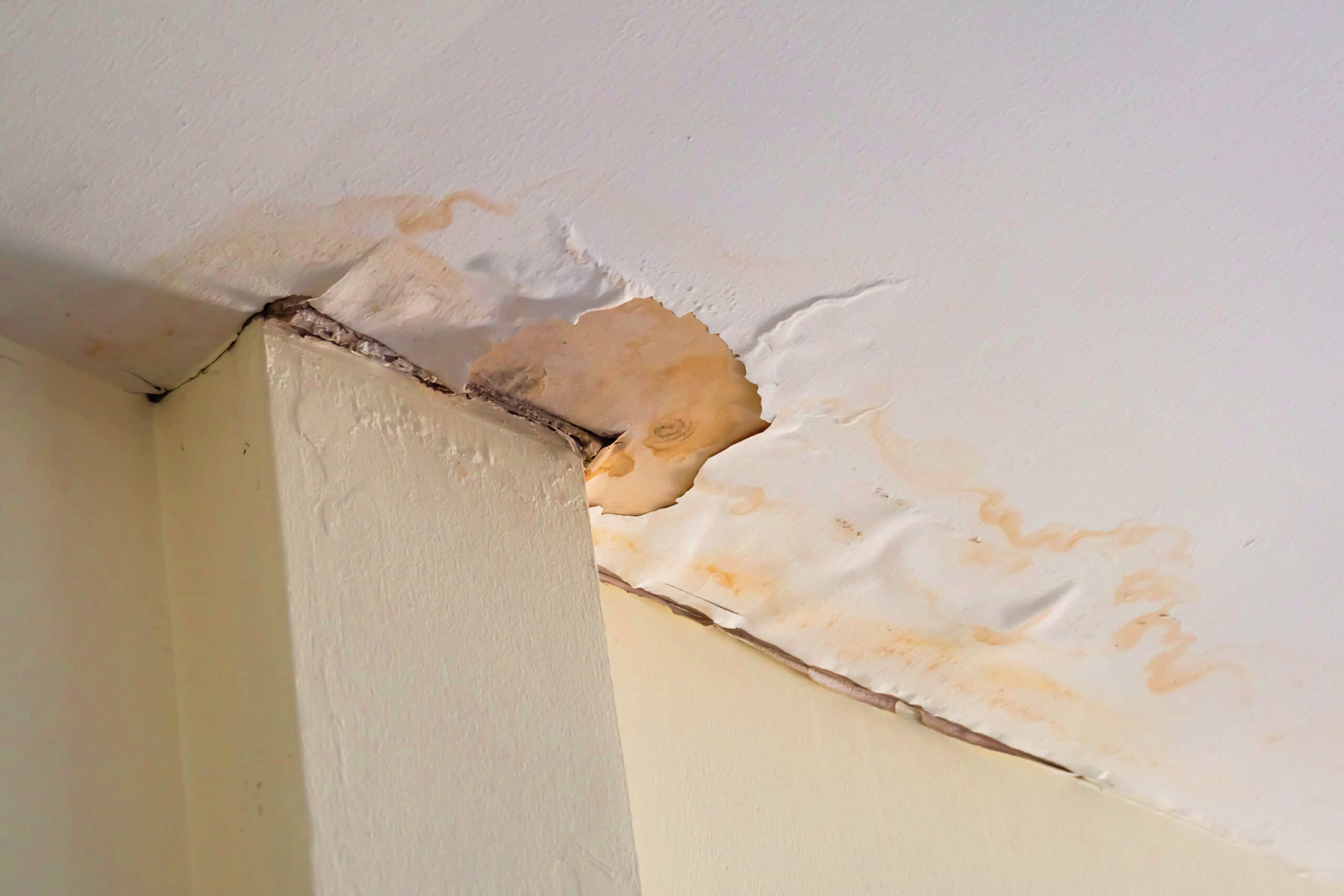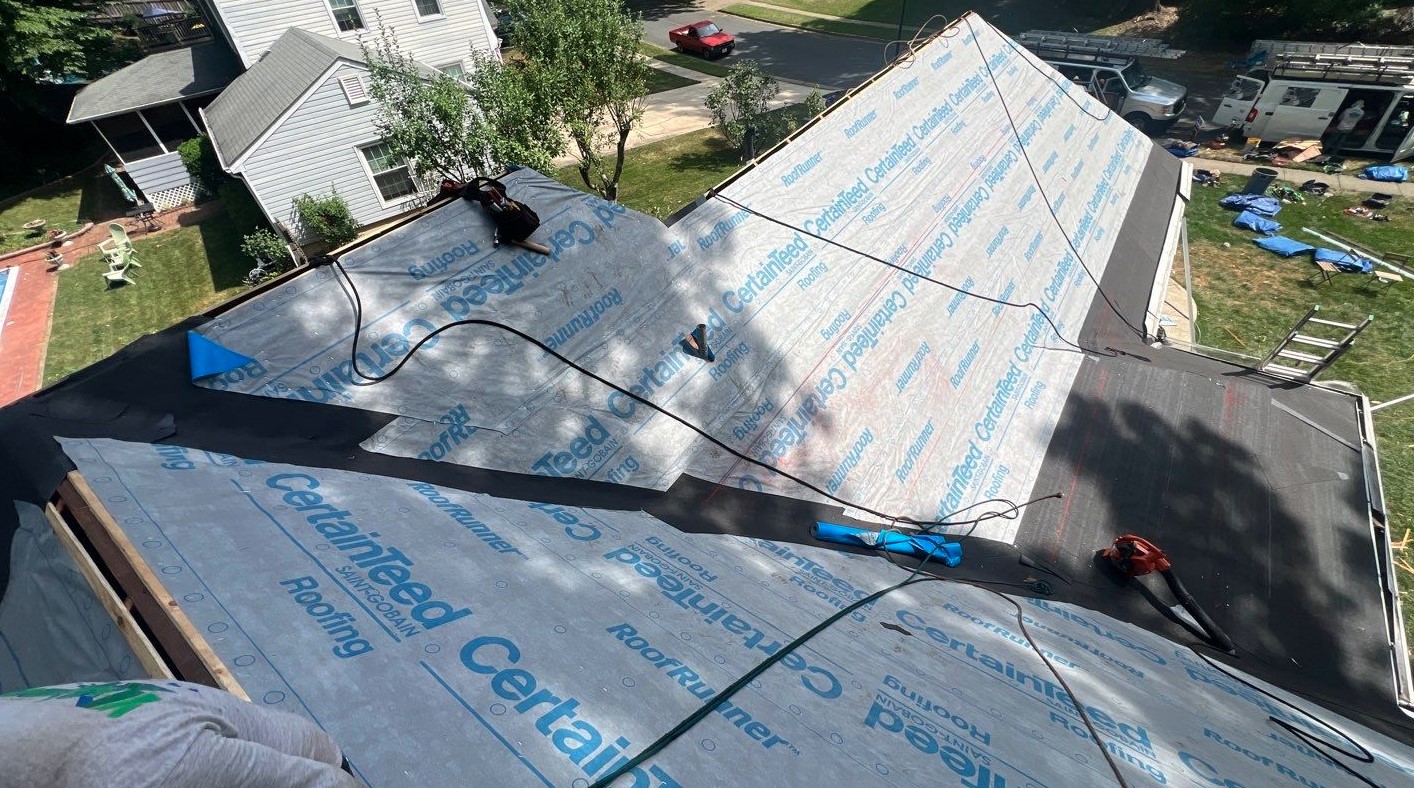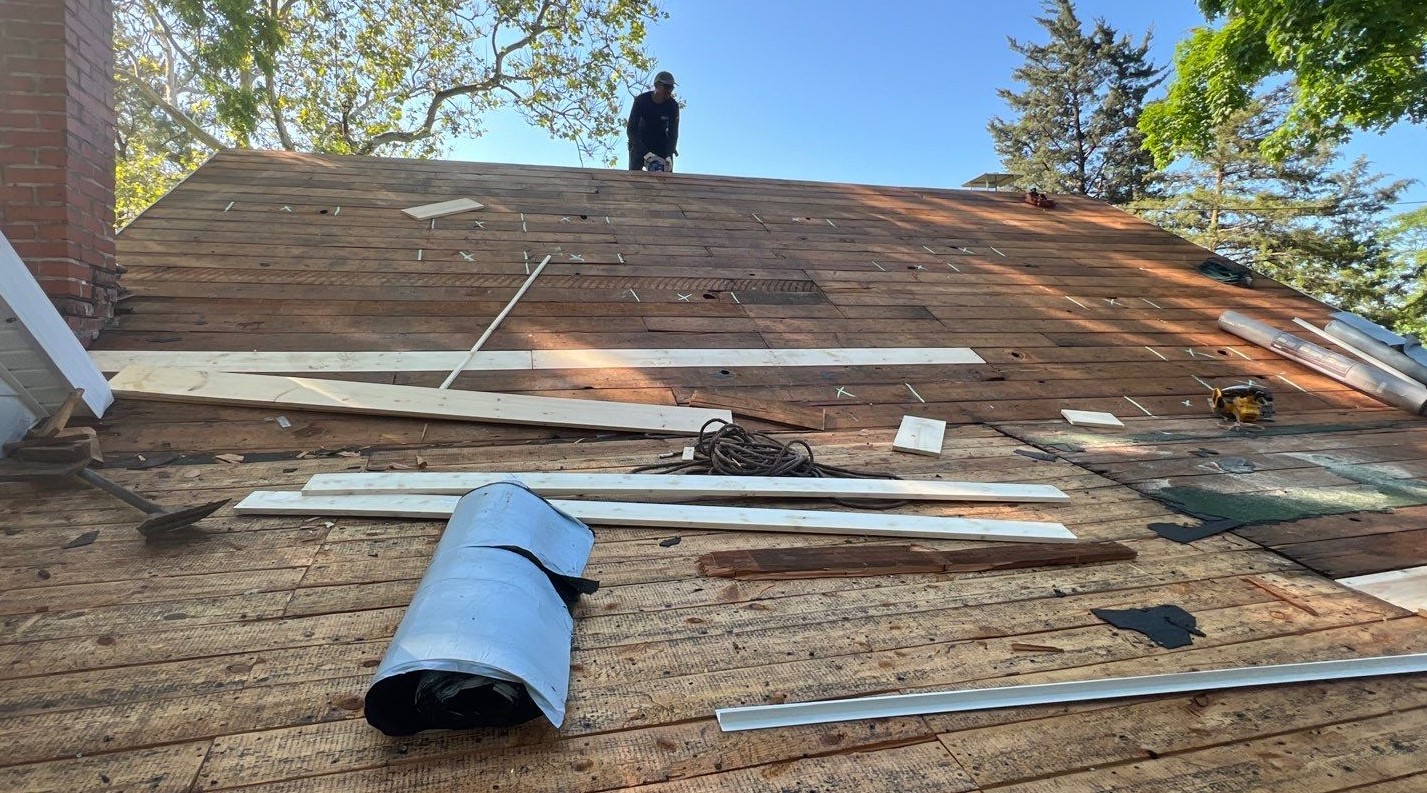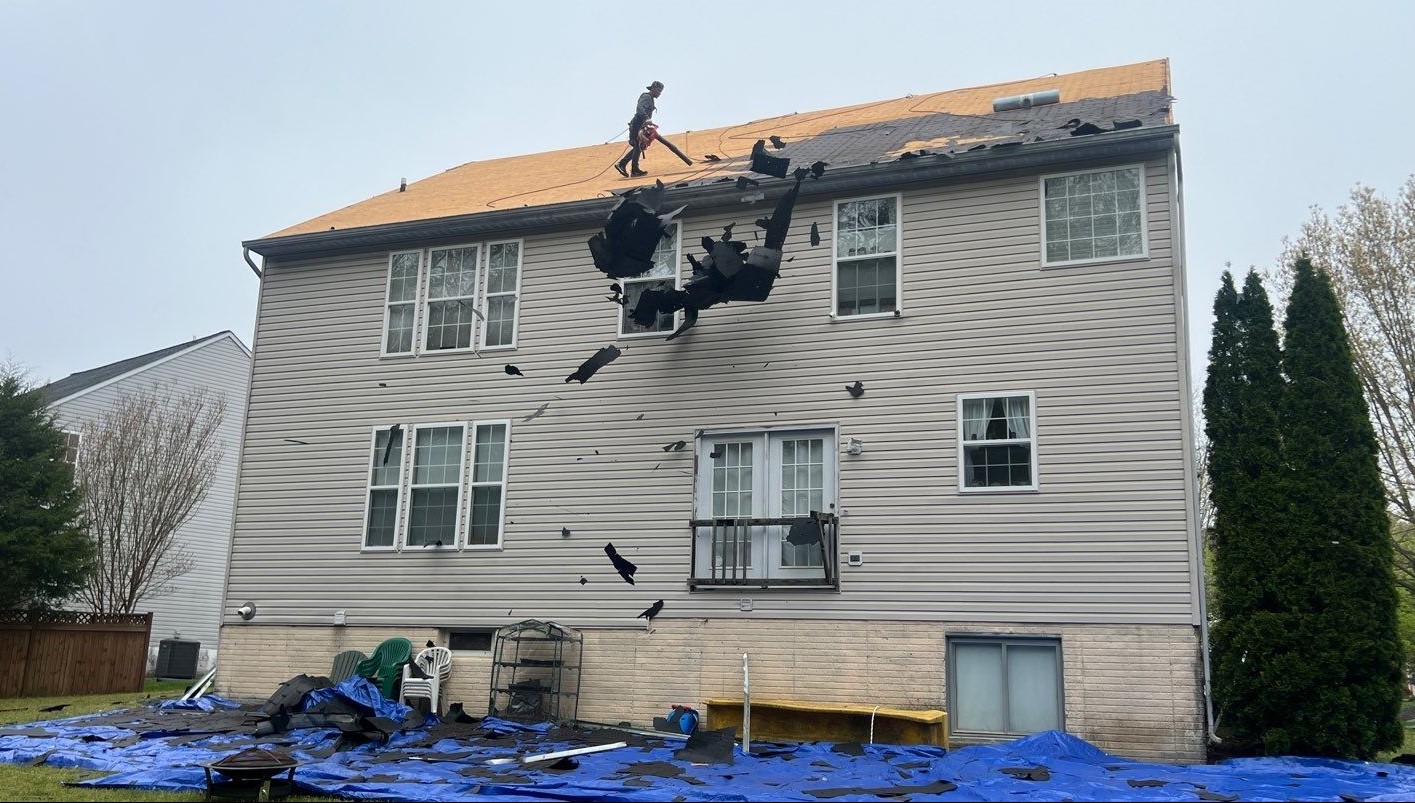Hailstorms can wreak havoc on your roof, causing damage that may not be immediately apparent. As homeowners and property managers, it’s crucial to understand how to spot the signs of hail impact such as discolored spots on shingles, cracked materials, or granules filling your gutters.
These indicators help assess a potential compromise in the integrity of your roof’s structure. Moreover, if you notice water stains inside your home or dents on exterior elements like siding and cars after a storm, chances are high that your roof could have sustained hail damage.
Recognizing these warning signs prompts timely action – inspecting the various components of the roofing system including its materials and drainage structures is essential to avoid further complications.
Given that serious weather events like hailstorms often lead to expensive repairs or even replacements, knowing whether an insurance policy will cover these costs is vital for financial planning.
Especially with older roofs over two decades old which might have limitations regarding coverage despite qualifying for post-storm repair claims.
Taking prompt steps towards addressing hail-inflicted damages protects both the longevity of the roof and reserves within one’s maintenance budget. Let our guide equip you with knowledge so you can confidently tackle this issue head-on — ready for peace of mind no matter what Mother Nature throws at your roof next!
Roof Damaged by Hail: Key Takeaways
- Inspect your roof for signs of hail damage such as discolored shingles, cracks, and granule loss in gutters.
- Check other property areas like siding, cars, and landscaping to gauge the storm’s impact.
- Contact professional roofing contractors for damage assessments and repair estimates.
- Communicate with insurance providers about coverage options for hail – damaged roofs.
- Document all damages and repairs thoroughly for potential insurance claims.
Identifying Hail Damage on Your Roof
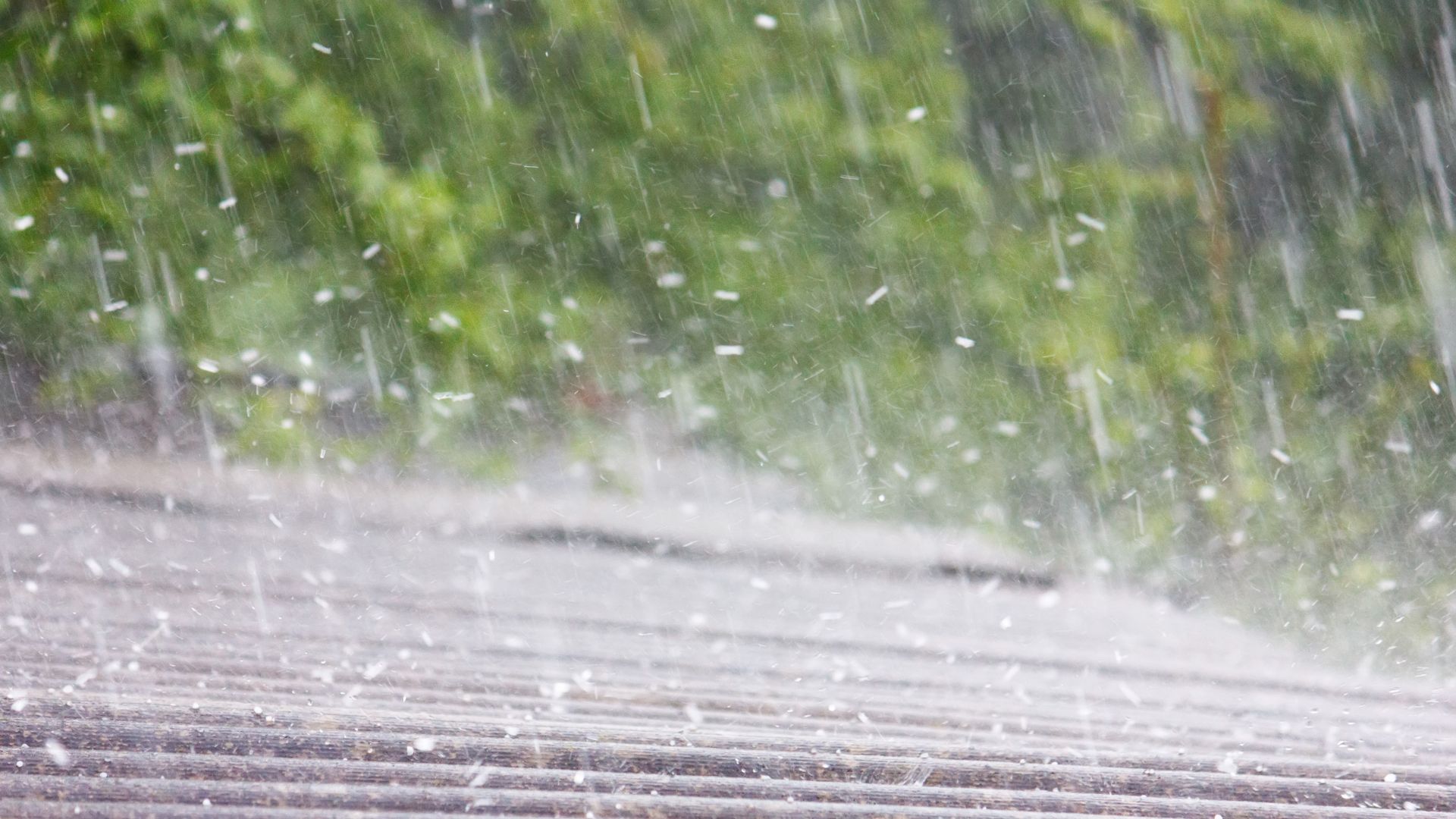
Inspecting your roof for hail damage is crucial in addressing potential issues before they escalate. Look out for discoloration or spots on shingles, cracked shingles or flashing, granules in your gutters and downspouts, and water stains on your ceiling as signs of possible hail damage.
Discoloration or Spots on Shingles
As we evaluate our roofs after a hailstorm, one of the telltale signs we look for is any discoloration or spots on the shingles. These markings could indicate where hail has impacted your roof, potentially compromising its integrity.
Discoloration often shows up as darker areas where the granules on asphalt shingles have been knocked off by hail stones or as shiny patches on wood shingle roofs where splits have occurred and exposed fresher material.
We find these blemishes are not just cosmetic issues; they can be signs that the protective surface of your roofing materials has been damaged. Carefully checking for irregular patterns or spots that mirror the trajectory and density of a storm allows us to pinpoint specific problem areas accurately.
It’s crucial to take note of these details because they help in assessing whether repairs are needed or if it’s time for a complete roof replacement.
Identifying hail damage early can save us from more extensive problems down the line, such as leaks and water damage inside our homes or commercial buildings. We understand how important it is to maintain a secure roof overhead—spotting these warning signs early means taking action promptly to protect our property against future storms and precipitation damage.
Cracked Shingles or Flashing
We often spot cracked shingles or flashing after a fierce hailstorm, and it’s crucial to pay attention to these details. These fractures can lead to serious problems if water seeps in and causes damage beneath the surface of your roof.
You’ll see visible cracks and even missing pieces where the granules have been pummeled away by hail. This type of storm damage weakens your roofing materials, making future storms even more of a threat.
It’s not just wood shingles that suffer; asphalt shingles are also vulnerable, and any compromised flashing can put the whole structure at risk.
Let’s take action swiftly when we notice these signs on our rooftops. Reaching out to a professional roofing contractor is essential for proper assessment and repairs. They have the expertise needed to replace damaged sections effectively, ensuring your property remains secure against further weather onslaughts.
Keep an eye out for curled or broken shingles as well as physical marks left from hail impacts – these are clear indicators that our roofs need attention without delay.
Calling in experts sooner rather than later helps prevent larger issues down the line such as leaks or structural damage. Trust in their skills to restore our homes and commercial buildings back to top condition before we face another round of nature’s fury.
Let’s safeguard ourselves by addressing cracked shingles or faulty flashing without procrastination; this is an investment in the longevity of our properties.
Granules in Your Gutters and Downspouts
Cracked shingles aren’t the only sign of trouble above; another alarm bell rings when you spot granules in your gutters and downspouts. These tiny, gritty particles play a vital role in protecting your shingles from UV rays and weathering, but hail can knock them loose.
If you’re seeing an accumulation of these granules, it’s likely that your roof has taken a hit from recent storms.
This visible evidence shouldn’t be ignored as it points to potential wear on your roofing materials. Without these protective granules, your shingles are vulnerable to the elements and may age prematurely.
Regularly check for this kind of sediment after hailstorms or heavy rainfalls—it could save you from extensive roof repairs down the line. Keeping an eye on what comes out of your downspouts can provide crucial clues about the integrity of not just the shingle surface but also the overall condition of your roof system.
Water Stains on Your Ceiling
If you’ve noticed granules in your gutters and downspouts or cracked shingles due to hail damage, it’s essential to check for water stains on your ceiling. Water stains can signal potential leaks caused by roof damage from hail storms.
Look out for moisture marks, brown, yellow or grey stains, and peeling paint on walls and ceilings as these are common signs of a damaged and leaking roof. It’s important to address water stains promptly as they may indicate the need for an inspection and repair to prevent further structural damage.
Inspecting your ceiling regularly can help identify any potential roof damage early on, allowing for timely repairs before the situation worsens. If you notice water stains on your ceiling following a hailstorm, it is crucial to assess the extent of the damage in order to safeguard your property against further harm.
Signs of Roof Damaged by Hail
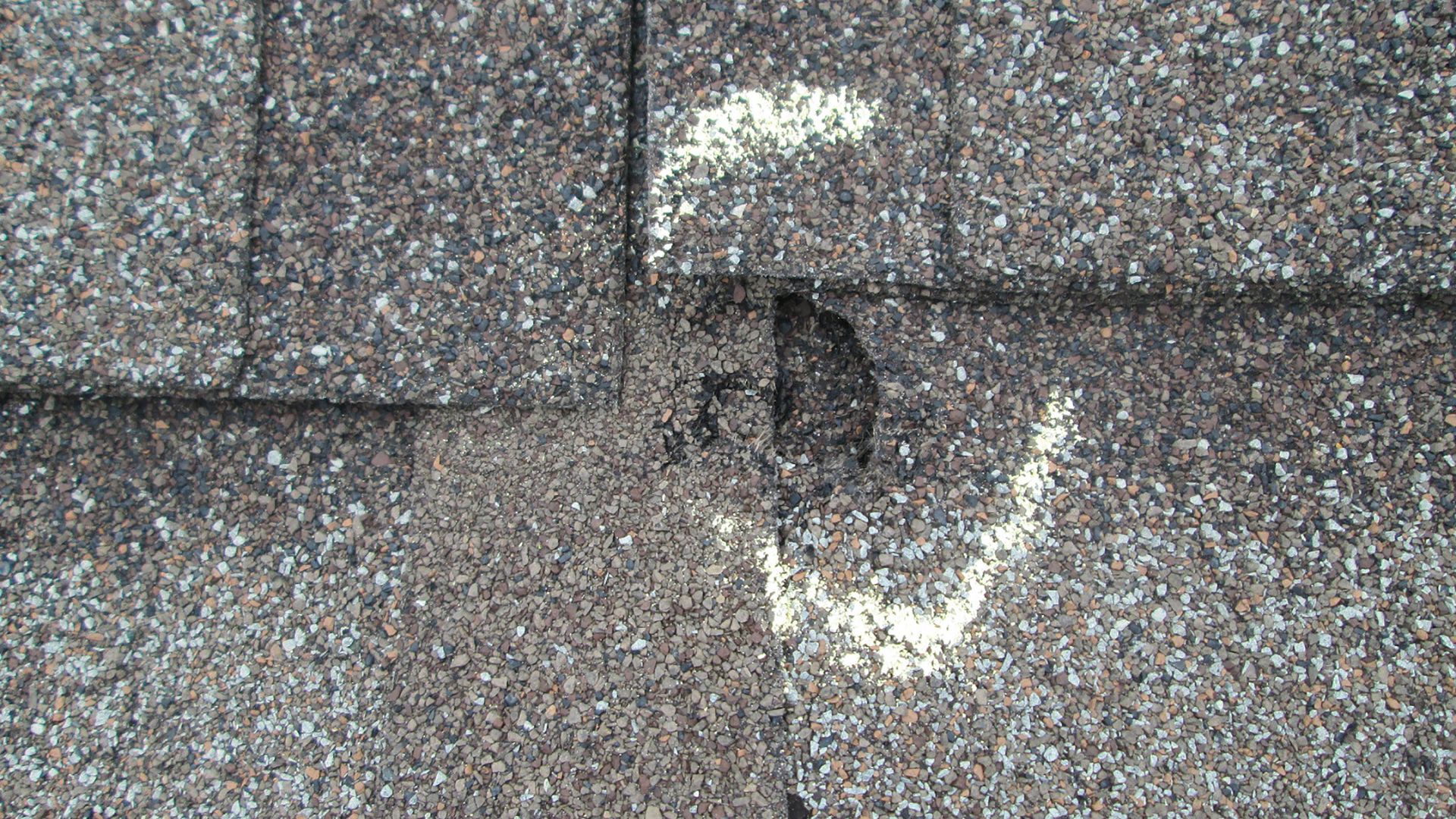
Damaged landscaping and plants, dents in your siding, gutters, or downspouts, and dents on any cars parked outside are all signs of hail damage to your property. Want to learn more about how to identify and fix roof damaged by hail? Keep reading!
Damaged Landscaping and Plants
Plants and landscaping are not just aesthetically pleasing elements of your property; they can also serve as indicators of potential hail damage to your roof. By inspecting the condition of your yard’s plants and landscaping features, you may uncover telltale signs that point to roof damage caused by hail.
Additionally, damaged landscaping and plants in the vicinity of your home can provide essential clues about potential hail damage sustained by your property. Observing any changes or harm to these outdoor features might be a crucial step in identifying if your roof has been negatively impacted by recent severe weather conditions.
A careful examination of the surrounding landscape and plants could help reveal any hidden effects stemming from hail damage to your roof, possibly prompting timely inspections or repairs.
It is paramount for residential homeowners and commercial property managers alike to be vigilant when it comes to assessing their outdoor spaces for possible indications of hail-related issues that may extend beyond visible structural damages.
Dents in Your Siding, Gutters, or Downspouts
Dents, dings, and scuffs on our siding and doors can provide clear evidence of hail damage. Similarly, high-impact hail often results in visible dents on gutters and downspouts. These signs can be indicative of roof damage caused by hail impact.
On aluminum gutters and downspouts, the indentations from hail are typically smaller than the diameter of the hailstones themselves. Whether they’re large or small, these dents serve as visual cues of potential roof damage resulting from a hailstorm.
Understanding these subtle indications is crucial for prompt action to avoid further deterioration of your property.
Dents on Any Cars Parked Outside
Inspecting for hail damage after a storm involves checking more than just your roof. Take a look at any vehicles parked outside during the hailstorm. Dents or dings on cars are clear indicators of impact, and it’s essential to document any damages as this can be used as evidence when filing an insurance claim.
Hailstones hitting the roof may also cause corresponding dents in vehicles parked nearby due to their dense and frozen ice composition.
Ensure every part of your property is thoroughly checked for damage caused by hail, including any vehicles parked outside. Once you’ve assessed the situation, move on to inspecting other areas affected by potential hail damage.
How to Inspect Your Roof for Hail Damage
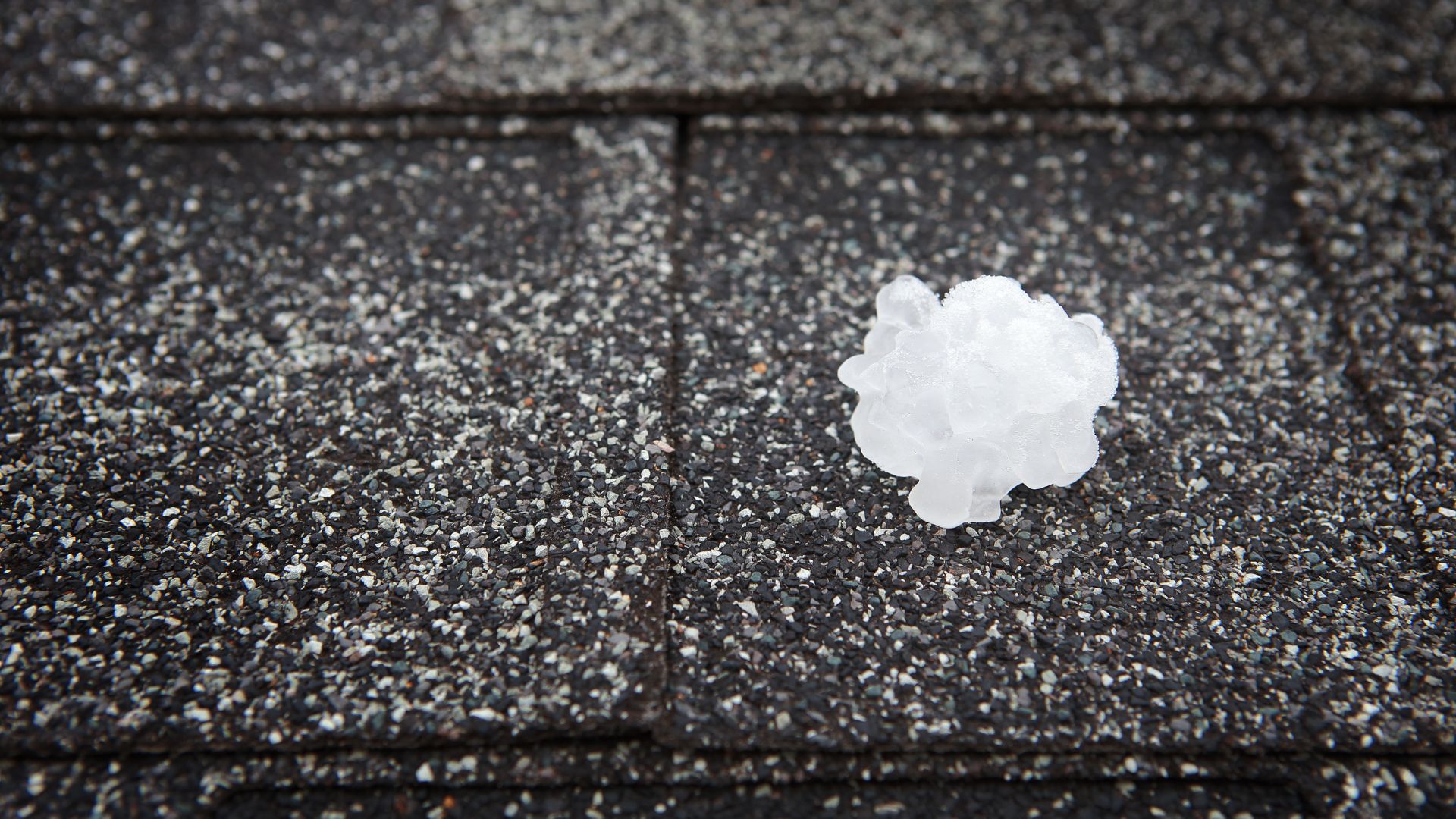
Inspecting your roof for hail damage involves checking the structure, roofing materials, gutters, and downspouts. Look for signs of discoloration, cracks, or granules in the gutters to identify potential damage from hail.
Your Roof’s Structure
Inspecting the structure of your roof is vital when assessing hail damage. Look for any dents or visible signs of impact on metal components like vents, flashings, and valleys. These areas are particularly susceptible to damage from hailstones, so a thorough examination is essential in identifying potential issues.
The integrity of the roofing materials should also be carefully examined for any cracks, breaks, or dislodged shingles due to hail impact. Any compromises in the structure can lead to leaks and further damage if left unaddressed.
Properly inspecting all these elements will provide a comprehensive understanding of the full extent of the hail damage and help determine necessary repairs.
The Roofing Materials
The roofing materials used on your property play a crucial role in determining the extent of hail damage. Asphalt shingles, commonly found in residential properties, can suffer from small dings caused by hail impacts.
Metal roofs may also show signs of denting due to hail. It’s essential to inspect these materials thoroughly for any damage and consider their susceptibility to impact when assessing the overall impact of a hailstorm.
Understanding how different roofing materials respond to hail impacts is vital when it comes to identifying and addressing potential roof damage effectively. By recognizing the unique vulnerabilities of each material, residential homeowners and commercial property managers can take proactive steps to protect their properties against future hail events while also making informed decisions about repair or replacement options based on the specific type of roofing material installed.
Your Gutters and Downspouts
Inspecting your gutters and downspouts is crucial following a hailstorm. Look for dents and cracks caused by hailstones – they serve as telltale signs of potential roof damage. If you notice any indentations on the aluminum gutters or downspouts, compare them to the size of the hail that hit them.
Significant bending or breaking may indicate severe damage to your roof, necessitating repairs or replacement. Regular visual inspections can help identify any issues early on, preventing further damage to your property.
Ensure vigilance in checking your gutters and downspouts after a hailstorm for any possible signs of roof damage due to hail impact.
Will Insurance Cover a 20-Year-Old Roof? Let’s Find Out
Insurance coverage for a 20-year-old roof can vary among different insurance companies. While some insurers may deny coverage for an older roof, it is still possible to obtain homeowners insurance even with an aging roof.
However, it’s essential to understand that most standard homeowners’ policies will cover damage caused by severe weather conditions such as windstorms, hailstorms, hurricanes, and tornadoes – encompassing the potential damages to the roof from these natural phenomena.
It’s worth noting that insurance companies won’t readily cover a roof solely due to its age; however, in cases where storm damage occurs – like from wind or hail – repairing an older roof might present more challenges compared to newer roofing systems.
On average, home insurance payouts for hail damage are around $12,000; this figure reflects repairs beyond just addressing the damages sustained by the roof itself. Homeowners seeking potential coverage for their roofs should ensure they have evidence of storm-related damage or consider appealing denied claims if applicable.
Understanding your policy and any additional options available can be beneficial in navigating through this process.
Moving forward into “Steps to Fixing a Hail-Damaged Roof,” we will explore practical strategies for addressing the aftermath of severe weather conditions on roofing structures and properties.
Steps to Fixing a Hail-Damaged Roof
Inspect the extent of damage on your roof, siding, and gutters.
Roof Damaged by Hail: Conclusion
Inspecting your roof for hail damage is crucial to avoid potential long-term issues. Identifying signs of damage, such as discoloration on shingles or dents in gutters, can help you take prompt action.
Seeking professional inspection and promptly contacting your insurance provider are essential steps in addressing hail damage. Fixing a hail-damaged roof requires proactive measures to restore its structural integrity and protect the property it covers.
Taking these steps promptly can save time and money in the long run while safeguarding your property from further damage.
Roof Damaged by Hail (FAQs)
1. What are the signs of roof hail damage?
Look for dents on roof vents, flashing, and asphalt shingles to identify hail impact. Additionally, check if window screens or vinyl siding show marks indicative of hail.
2. Should I inspect my roof after a thunderstorm for hail damage?
Yes, it’s vital to conduct a thorough roof inspection following thunderstorms as they often bring high wind speeds and hail capable of damaging your property.
3. How do I know if my insurance covers repairs for roof damaged by hail?
Contact your insurance agent to review your policy details including deductibles and premiums for covering repair costs due to wind or hail damage.
4. Can an insurance adjuster help with roofing issues from severe weather?
After reporting property damage to your insurance firm, an adjuster will appraise the condition of your wooden shake or aluminum siding and estimate replacement cost based on their assessment.
5. Why is fixing a leaky roof important after detecting potential hail harm during inspections?
Neglecting small leaks can lead to larger issues such as water vapor entering the home; therefore, timely repairs are crucial in maintaining structural integrity.
6. Do all types of roofs require equal attention post-hail storm conditions?
Not necessarily; while every type needs some level of inspection after storms with potential hail conditions reported by the National Severe Storms Laboratory, materials like wood shake may demand closer examination compared to others like asphalt shingles.


